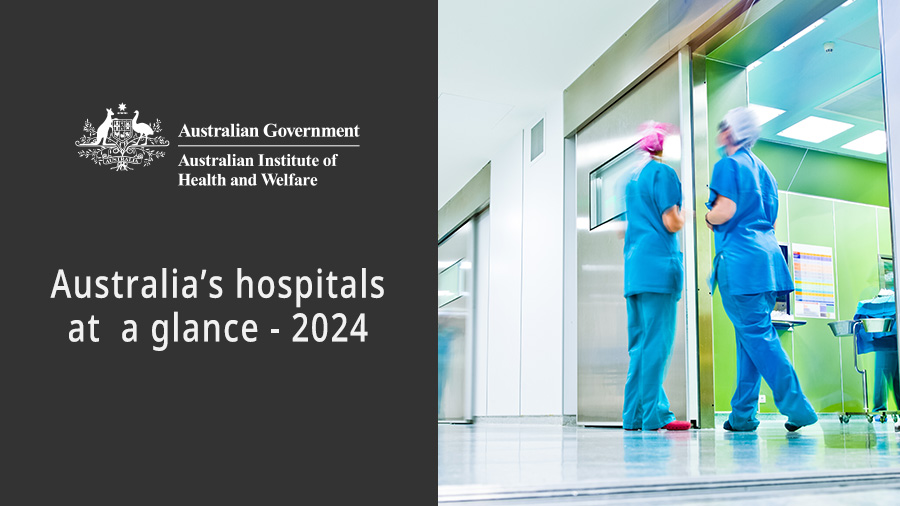Hospitals play an important role in Australia’s health care system, providing care to millions of Australians each year. Services are provided both to admitted patients and non-admitted patients (through outpatient clinics and emergency departments).
Australia has public and private hospitals. Public hospitals are largely owned and managed by state and territory governments, with funding also provided by the Australian Government. Private hospitals are owned and managed by private organisations, some of which are non-profit. Private hospitals are funded by charges to patients that are often subsidised by government and private health insurance payments.
Overview
Based on the latest available data, on average each day, Australian hospitals:
- cost $263 million to run (public and private hospitals)
- employ 186,000 nurses and 56,700 doctors in public hospitals
- record 33,200 hospitalisations in public and private hospitals
- record 410 hospitalisations with a hospital-acquired complication in public and private hospitals
- provide 113,000 services to non-admitted patients
- record 5 Staphylococcus aureus bloodstream infections in public hospitals
- record 24,100 presentations in emergency departments at public hospitals
- record 2,000 admissions to public hospitals from elective surgery waiting lists.
Source: HEA 2021–22, NPHED 2022–23, NHMD 2022–23, NNAPEDCD 2022–23, NESWTD 2022–23, NNAPCD 2022–23, NSABDC 2022–23.
To see the complete report either view or download the PDF below.
Published 18 Jul 2024 - AIHW Web Site





